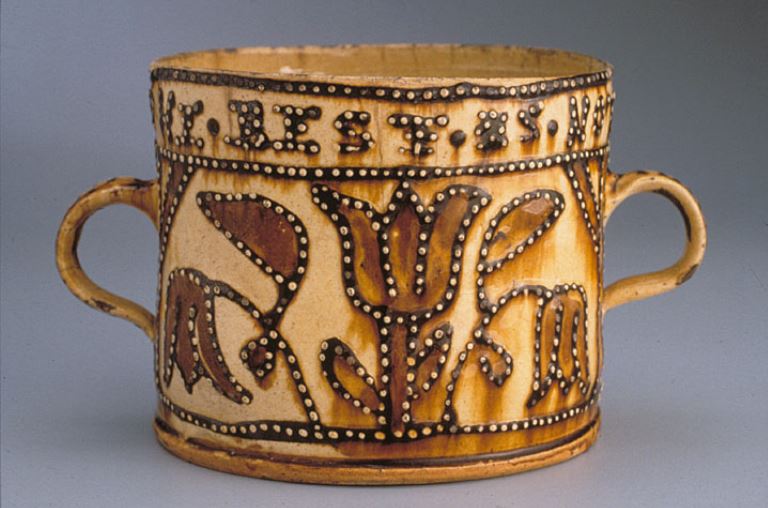Akira Satake (NC)
Akira's Statement
The inspiration for my assignment was a lead-glazed, two-handled cup made in England in the late 1600s which was used in a ceremonial fashion for the communal consumption of alcoholic beverages. The double handles signify that this was a cup to be shared with others in a rather ritualistic way, not to be used for solitary drinking. I started thinking about other drinking ceremonies and was reminded of the Japanese tea ceremony, which evolved during the Momoyama Period (1568 - 1715) into the form in which it is still practiced today. It is interesting to note that the British cup was made during roughly the same time period as Japan’s Momoyama era.
Although it obviously did not involve alcoholic beverages, the tea ceremony still represented the sharing of a moment and a relationship, along with the sharing of a beverage. Often, a shogun would conduct a tea ceremony with his samurai before going to war to instill a sense of calm and to give them, and himself, a chance to meditate and prepare for what lay ahead on the battlefield.
The shape of the British cup also reminded me of the Iga-style water jar (Mizusashi) traditionally used in tea ceremonies. I decided to make my vessel from an Iga/Shigaraki style clay I make with ingredients from several different areas of the U.S., including local North Carolina feldspar with silica and mica mixed in. The original cup was fired at a low temperature using a lead glaze, I fired mine in a wood-fired kiln without any glaze for 50 hours to an extremely high temperature of over 2,300 degrees F, giving it a natural ash glazed surface.
I like to imagine my cup being used by a group of samurai during the Momoyama Period before a battle, sharing sake to encourage each other, or afterward to celebrate their victory and maybe to console themselves over the loss of some of those comrades.
Akira's Bio
For me, the act of creation is a collaboration between myself, the clay and the fire. Collaboration means finding what the clay wants to be and bringing out its beauty in the way that the beauty of our surroundings is created by natural forces. Undulations in the sand that has been moved by the wind, rock formations caused by landslides, the crackle and patina in the wall of an old house; all these owe their special beauty to the random hand of Nature. The fire is the ultimate random part of the collaborative equation. I hope the fire will be my ally, but I know it will always transform the clay in ways I cannot anticipate.
Akira Satake was born in Osaka, Japan and has been living in the U.S. since 1983. In 2003 he relocated from Brooklyn, New York to Swannanoa, North Carolina.
The Philadelphia Museum awarded him the National Award for Excellence in Contemporary Clay. A Craftsman’s Legacy - a national weekly television series on PBS, featured his life and work.
Akira is widely sought after for workshops, lectures, and exhibitions and has been invited to France, Belgium, Israel, Australia, Spain and Bali.
Collections: The Mint Museum and The Phillips Collection.

Daisakazuki
Akira Satake, 2017. Swannanoa, NC. H. 5"
This is the piece Akira created for THE LAST DROP: INTOXICATING POTTERY, PAST AND PRESENT.

Two Handle Cup
Staffordshire, England, ca. 1690-1700. Trailed and jeweled slipware. Chipstone Foundation. 1967.13. H. 5 ¼”
This is the historical piece from which Akira chose to draw inspriation.